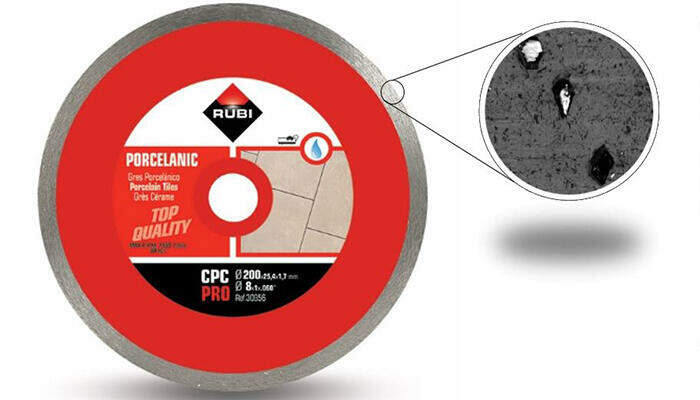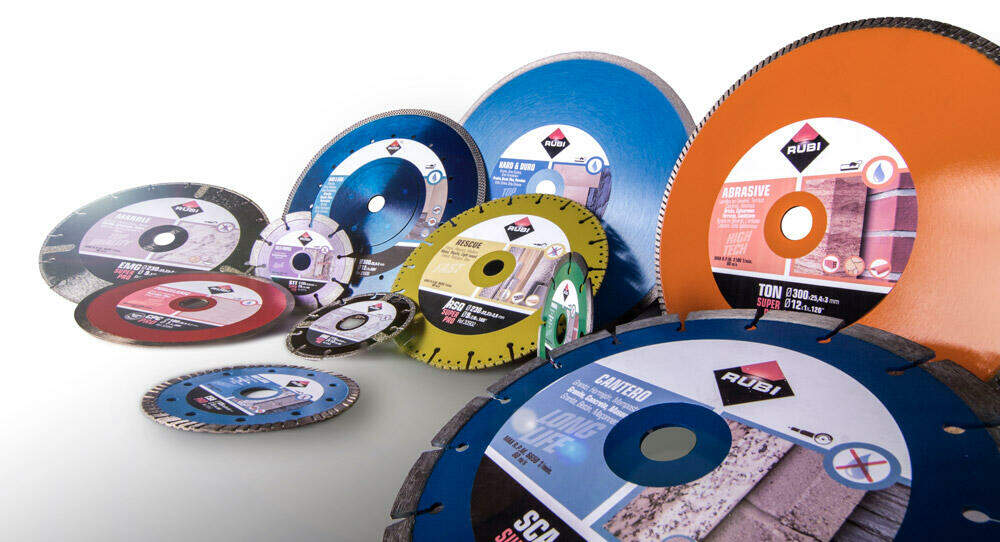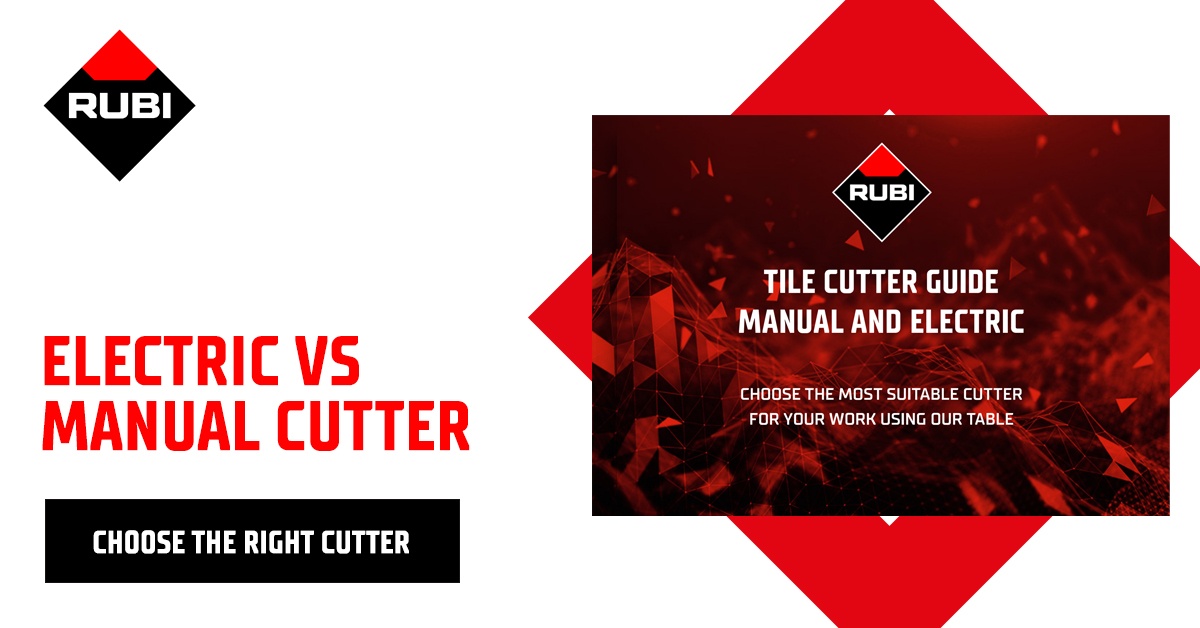Need serious cutting power? Diamond cutting discs last up to 200 times longer than conventional abrasive blades when cutting tough materials like concrete, stone, or tile. This durability, along with the precision and efficiency a diamond disc provides, makes them a staple in construction and renovation tasks. Today, we’re taking a closer look into diamond discs, exploring the types best suited for specific materials, from segmented blades for rougher concrete cuts to continuous rims for smooth tile finishes. We’ll also cover techniques for using these discs effectively in a tile installation, safety tips, and ways to extend their lifespan.


Diamond Discs and Their Purpose
Diamond discs are essential for cutting hard materials, including concrete, stone, and tile. These discs differ from conventional blades because of the diamond coating on their edges, which makes them highly effective on tough surfaces. Unlike other blades, diamond discs are designed to handle high-pressure tasks while minimizing wear, making them popular for construction and renovation.
There are three primary types of diamond discs for various applications:
- Segmented Blades
- Continuous Rim Blades
- Turbo Blades
Segmented Blades
Segmented blades are commonly used for materials requiring aggressive cuts, such as concrete and brick. The gaps in these blades allow for heat dissipation, which prevents overheating and extends the blade’s lifespan. The design makes them effective for large projects requiring fast cuts, although they can leave a rougher edge on materials.
Continuous Rim Blades
For a smoother, precision cut, continuous rim blades are the preferred choice. The blades, with an uninterrupted diamond-coated edge, are slower but achieve a clean finish on ceramics and porcelain. Their structure limits dust production, and they work best with wet cutting to ensure cooling and cleaner results.
Turbo Blades
Turbo blades combine aspects of segmented and continuous blades, featuring a notched edge that enables moderate speed with a finer finish. The balance makes turbo blades suitable for multiple materials, including both hard and delicate surfaces. Their versatility provides reliable performance in projects where both speed and cut quality are priorities.

Proper Usage Techniques and Speed Settings
Using a diamond disc effectively requires understanding the right techniques and speed settings. Applying the correct cutting speed, maintaining steady pressure, and ensuring proper cooling can all impact the quality of your work and the lifespan of the disc.
There are three main factors to keep in mind when working with diamond discs:
- Cutting speed
- Pressure and control
- Cooling methods
Cutting Speed
The right cutting speed depends on the material and disc type. Matching the tool’s RPM to the material is crucial for clean, efficient cuts. Different materials require different speeds.
For example, hard materials like concrete often need a slower, steady pace, while softer materials may handle a quicker cut. Following the recommended RPM for your diamond disc will reduce wear and improve cut quality.
Pressure and Control
Applying steady pressure when cutting is key to avoiding overheating or damage. Excessive force can wear the disc down faster, while too little pressure might create an uneven cut. By letting the disc do the work and maintaining a consistent hand, you’ll get smoother, more professional results.
Cooling Methods
For many materials, using water as a cooling aid is essential. Wet cutting reduces dust and helps control the heat generated, which protects both the disc and the material.
However, some discs are made specifically for dry cutting. Be sure to match your cooling approach to the disc’s design, as this will ensure the longest possible disc life and the cleanest cuts.

Safety Precautions and Disc Maintenance
Safety is always a priority when working with diamond discs. Using the correct protective gear is the first step. Goggles protect your eyes from debris, while gloves safeguard your hands from any sharp fragments or unexpected movement of the tool.
Closed-toe shoes and ear protection can add an extra layer of safety, especially in high-noise environments.
Before you begin, check that the disc is properly mounted and secure. Loose discs can shift or even break, causing potential injury.
Make sure the disc is compatible with your tool’s RPM range. Running a diamond disc faster than its rated RPM can weaken the disc and increase the risk of breaking. Always keep bystanders at a safe distance while you work.
Maintaining your diamond disc is just as important as using it safely. Clean the disc regularly, removing any material buildup from the blade. Dirt or debris on the disc can reduce its effectiveness and create extra friction, which wears the disc down faster.
After each use, inspect the disc for cracks or other signs of wear. A cracked or damaged disc should be replaced immediately, as using a compromised disc can lead to accidents.
Store diamond discs in a dry, safe place to avoid moisture exposure and prevent them from warping. A warped or rusted disc won’t cut effectively and may break under pressure. Taking these steps in safety and maintenance not only protects you and those around you but also extends the life of your diamond disc, keeping it in peak condition for future projects.
Extending the Lifespan of Your Diamond Disc
Consistent cleaning is another way to ensure a diamond disc’s longevity. Dust and debris collect on the blade during use, creating friction and reducing cutting performance. After each session, brushing off the disc will help it stay sharp and ready for the next job.
Regularly inspecting your disc for cracks, warping, or any signs of wear is essential. These issues not only affect the quality of the cut but can also create safety hazards.
Replace any disc that shows significant wear, as a damaged disc will perform poorly and could break during use. Proper storage is another key factor in extending a disc’s life. Keep diamond discs in a dry, stable place where they won’t warp or rust.
Cutting Concrete and Stone
A diamond disc is an invaluable tool for cutting and grinding hard materials when used correctly.
At RUBI, we advance daily alongside global professionals, delivering tools that enable top results. Known for quality and innovation, we’ve introduced TZ manual cutters, a breakthrough in ceramic cutting with unmatched separation capacity, setting new standards in manual tile-cutting technology.
Get in touch today to find out how we can help your cutting needs!


Post a comment